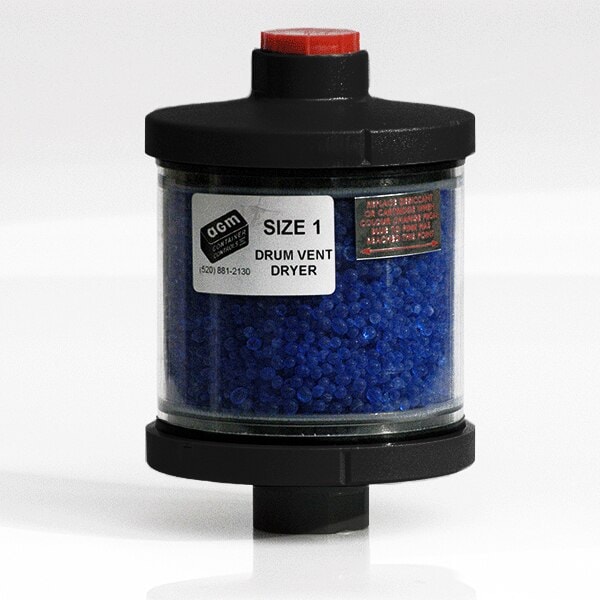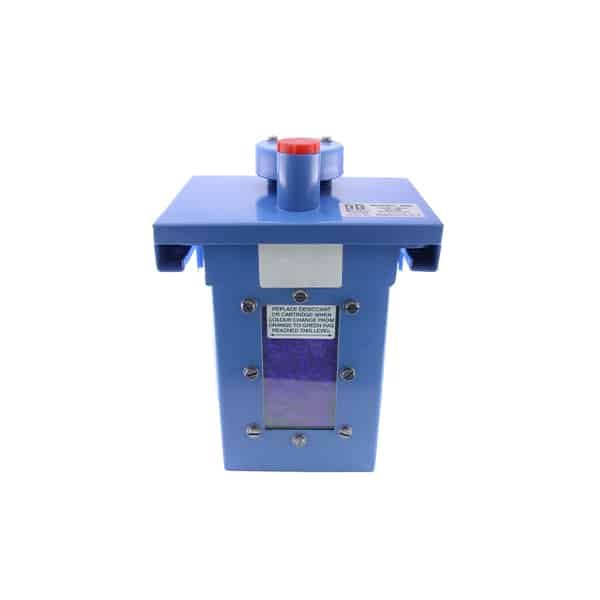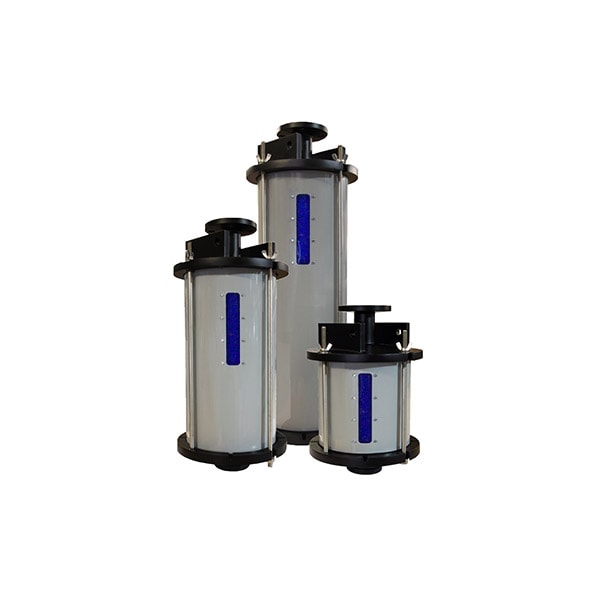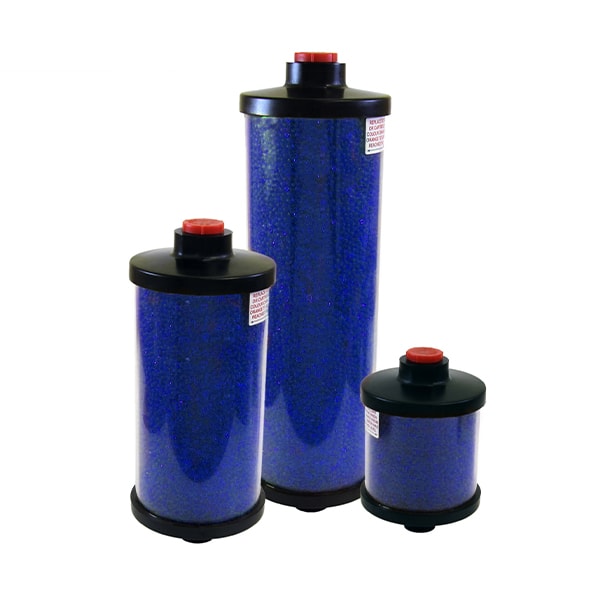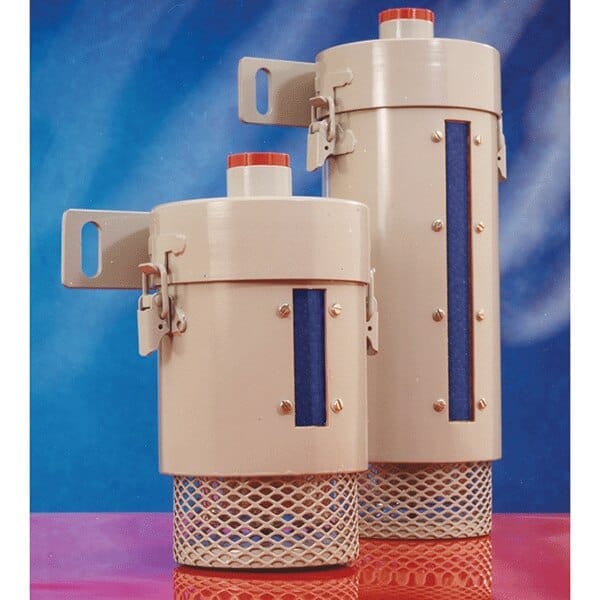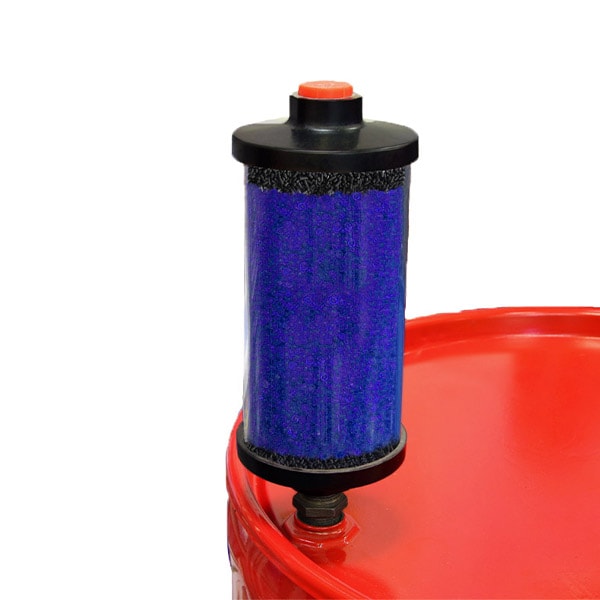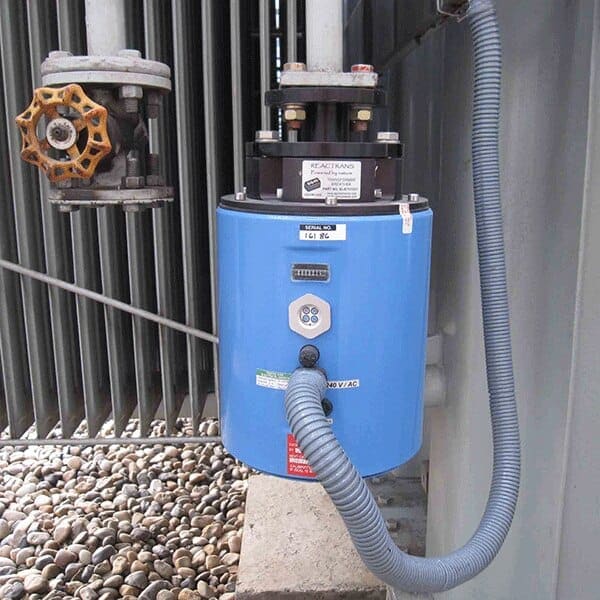Trouble finding a product?
Contact us.
Desiccant Breathers
Desiccant breathers, or contamination control breathers, protect chemical products from moisture contamination. AGM desiccant breathers are reusable and protect items in storage drums, storage tanks, hydraulic reservoirs and other areas.
- Container Access
- Corrosion Prevention
- Humidity Monitoring
- Moisture Control
- Moisture Purging
- Pressure Control
- Shelving & Straps
- Shock Monitoring
Find What You're Looking For
It’s a lot, we know. If you’re looking for something specific or aren’t sure what you need, try searching through all products or give us a shout and we’ll help!
What is a desiccant breather?
A desiccant breather is a breather valve with an attached desiccant cartridge. Air that flows through the breather valve when it opens must pass through the desiccant canister, where moisture held in the air is adsorbed by the desiccant.
Types of Dessicant Breathers
We carry the following types of desiccant breathers:
- Drum Vent Dryers
- Tank Vent Dryers
- Transformer Breathers
Drum Desiccant Breathers
Drum Desiccant Breathers, also known as drum vent dryers, prevent contamination and permanent damage from absorbed water vapor, which occurs during storage and use.
How do drum desiccant breathers work?
Changes in temperature, barometric pressure, and fluid pumping will result in air entering the drum. This air passes through a column of blue indicating silica gel, which removes and retains the water vapor. The silica gel changes from blue to pink when the desiccant is saturated and requires replacement. The units can also be filled with orange silica gel, which is acceptable for use in the European Union. The drum desiccant breather is reusable, therefore saturated desiccant can easily be replaced by removing the access port plug.
The drum desiccant breather begins to work from the moment it is installed. Field testing has demonstrated that when a drum desiccant breather is fitted to a new drum of uncontaminated fluid, the airspace above the fluid is made safe from condensation within a few hours.
Tank Desiccant Breathers
The reusable tank desiccant breather offers an innovative solution to the desiccant breather industry. Instead of wasting yet another traditional breather, now all you have to do is attach a tank desiccant breather to your industrial storage tanks (up to 132,000 gallons!) and simply change the desiccant when needed.
How do tank desiccant breathers work?
Each tank desiccant breather can be filled with a variety of desiccant products, including blue or orange indicating silica gel, molecular sieve, activated alumina and activated carbon. The standard desiccant fill is blue silica gel.
Then all you need to do is change the desiccant when needed — it’s that simple!
Transformer Desiccant Breathers
The failure or malfunction of many transformers or similar equipment can be directly attributed to the lack of proper control of the level of water vapor entering the equipment. It is essential, therefore, that a very low level of humidity is maintained in the airspace of the conservator tank to avoid deterioration in the insulating properties of the cooling medium.
Transformer desiccant breathers provide an economic and efficient means of controlling the level of moisture entering equipment during the change in volume of the cooling medium and/or airspace caused by temperature gradients.
How do transformer desiccant breathers work?
All transformer desiccant breathers (except Re-Actrans) are filled with self-indicating silica gel. This desiccant is blue when active and turns pink when saturated. This allows a visible assessment of the condition of the desiccant. Various sizes and types of packs of this desiccant are available for recharging the desiccant containers.
Transformer desiccant breathers provide clear visibility of the desiccant charge through a clear, shatter-proof, UV stabilized polycarbonate cylinder or window, depending upon the size of the unit. Two-way, low-pressure valves are fitted in the base of the breather to ensure that atmospheric air enters the desiccant charge when a negative pressure differential occurs within the equipment being protected.
Benefits Of Using Desiccant Breathers
Some of the benefits of using desiccant breathers include:
1. Avoid contaminated substances that result in:
- Alteration of Active Properties
- Increased Corrosivity
- Loss in Dielectric Properties
- Viscosity Variation
- Chemical Instability
- Coagulation and Sedimentation
2. Ability to remove other contaminants (see the list below) other than water vapor:
- acetone
- acid
- ammonia
- carbon dioxide
- carbon monoxide
- ethylene
- formaldehyde
- freon
- hydrogen
- oil vapors
- oxides of nitrogen
- sulphide
- sulphur dioxide
- toluene
Overall, a desiccant breather is pressure relief and moisture mitigation combined. Using a desiccant breather negates the need to design and install two separate systems and ensures that water vapor in the air is immediately adsorbed upon entering an enclosed space.
Industry Applications
Some common industry applications for our desiccant breathers include:
- Aerial surveillance cameras and equipment
- Chemical tanks
Contact us to find out if our desiccant breathers are the right solution for your application.
Custom Engineering Service
No two jobs are the same so get the solution that’s right for you. Work with AGM Engineering and get a solution specific to your challenge today.
FAQs
Like breather valves, a desiccant breather has an indefinite shelf life. However, the desiccant in the cartridge (or the cartridge itself) must occasionally be replaced when the desiccant inside becomes saturated with moisture.
How often the desiccant saturates is entirely dependent upon the context of the desiccant breather’s installation (e.g. the operational environment, size of the desiccant cartridges, how often the breather opens, etc). As a result, saturation may not occur for many months or it could happen over the course of a few openings.
How often you need to change the desiccant will depend on the type of desiccant breather you are using:
- Drum Desiccant Breathers: This depends on several factors, such as how often the drum is emptied, the rate at which the contents of the drum are emptied, the environmental conditions (temperature, relative humidity, and pressure) and changes in those conditions, exposure to sunlight, and the contents of the drum.
- Tank Desiccant Breathers: This will depend on the size of the desiccant breather you need to fit the transformer, as determined by our Selection Guide. To increase the time between desiccant change-outs, you can always select a unit that is larger than that which is called for in the selection guide.
- Transformer Desiccant Breathers: This depends on several factors, such as how often the drum is emptied, the rate at which the contents of the drum are emptied, the environmental conditions (temperature, relative humidity, and pressure) and changes in those conditions, exposure to sunlight, and the contents of the tank. The breathers can easily be refilled without any special tools.
A desiccant breather has an indefinite shelf life. However, the desiccant in the cartridge (or the cartridge itself) will occasionally be changed out when the desiccant inside becomes saturated with moisture.
Like a breather valve, a desiccant breather is commonly installed using a mounting flange.
Transformer desiccant breathers are designed to protect transformer reservoirs and rectifiers from the effects of moisture. Transformer reservoirs have little oil movement, whereas drum vent dryers are designed for drums and tanks which are being emptied and filled continuously, requiring higher flow rate capacity.
We recommend a tank desiccant breather.
No, all of our desiccant breathers are refillable. We provide refill packages of the blue, or orange, silica gel 2-5 mm beads starting at the smallest individual breather size of 1.32 lbs., and other repackaged amounts up to the standard packaging for both the blue silica gel and orange silica gel 2-5 mm beads (25 kg containers). The breathers can also easily be refilled without any special tools.
Drum Desiccant Breather FAQ
The most commonly used desiccant in drum desiccant breathers is blue silica gel, which allows for an easy visual indication as to when the desiccant needs to be replaced. The units can also be filled with orange silica gel, molecular sieve, activated alumina, or activated carbon.
We also sell the aforementioned desiccant in bulk form, including prepackaged replacement amounts of the blue silica gel.
A heavy-duty industrial model that holds twice the amount of silica gel is available for larger drums or use in harsh environmental conditions (e.g. tropical).
The units will work in temperatures from -4°F to 131°F.
Tank Desiccant Breather FAQ
The most commonly used desiccant in tank desiccant breathers is blue silica gel, which allows for an easy visual indication as to when the desiccant needs to be replaced. The units can also be filled with orange silica gel, molecular sieve, activated alumina, or activated carbon.
The primary factor for knowing which size desiccant breather to use is the maximum emptying rate. Of secondary importance is the fluid capacity (volume) of the tank.
Use our Selection Guide and be sure to select a size with a flow rate greater than the maximum emptying rate of the tank.
Easy installation instructions are provided on our website.
Transformer Desiccant Breather FAQ
Our transformer desiccant breathers are constructed of very durable materials. The small units are made from a tough UV stabilized glass loaded polycarbonate. The larger units are constructed from aluminum. All units are fitted with a two-way relief valve mechanism that eliminates all maintenance except for replacing the desiccant once it is saturated. All the breathers have a viewing window (there is 180-degree visibility on the small units) to easily determine when the desiccant needs to be replaced.
You find out which size desiccant breather to by looking at the maximum oil contents of the transformer or the MVA rating.
Find What You're Looking For
It’s a lot, we know. If you’re looking for something specific or aren’t sure what you need, try searching through all products or give us a shout and we’ll help!
